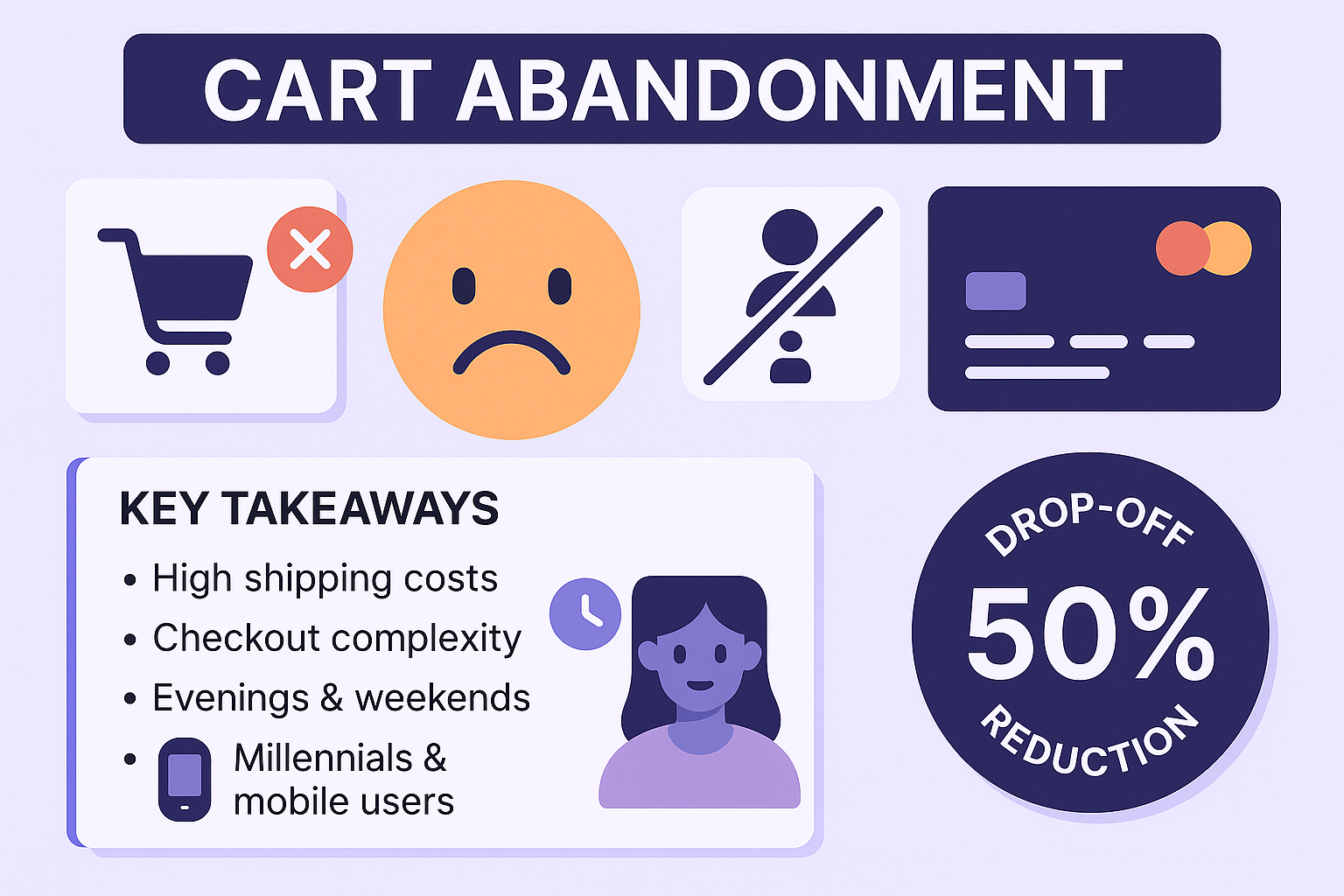Cart abandonment is a persistent challenge for Shopify store owners. Understanding the who, what, why, and when behind it can help you reduce lost sales and improve your checkout conversion rate. While there are many strategies to combat this issue, streamlining the checkout experience—like what solutions such as Wallid enable—can make a measurable difference.
"Shopify's data shows that a better checkout tool can convert up to 50% better than guest checkout, emphasizing the power of a streamlined checkout process." - Shopify Team
Why Do Shoppers Abandon Carts?
- Understanding why carts are abandoned is key to optimizing your funnel. Here are the top reasons:
- Unexpected costs (shipping, taxes)
- Complicated or long checkout process
- Forced account creation
- Concerns about payment security
- Limited payment options
Addressing these friction points—such as reducing checkout steps and offering trusted, secure payment methods—can significantly lower abandonment rates.
Who’s Abandoning Carts the Most?
Research shows that:
- Millennials (ages 25–40) have the highest abandonment rates due to multitasking and price sensitivity.
- Mobile users tend to abandon sites more frequently than desktop users due to poor UX/UI.
That’s why many eCommerce platforms, including Wallid, focus on mobile-first design to support a seamless experience for users on the go.
When Does Cart Abandonment Peak?
Knowing when cart abandonment is most likely can help you time your retargeting efforts:
- Time of Day: Highest in the evening (8–10 p.m.)
- Days: Weekends show higher rates
- Seasonal Trends: Spikes during Black Friday, Cyber Monday, and just before major holidays
Automated recovery tools and real-time analytics can be instrumental in engaging shoppers at the right time.
Cart Abandonment: Shopify-Specific Insights
If you are using Shopify, you can use built-in tools like abandoned checkout recovery emails and third-party apps to address cart abandonment. Shopify's analytics can help you identify the specific point where abandonment occurs.
Some platforms—Wallid included—offer direct Shopify integrations that streamline checkout and support recovery strategies without disrupting your store’s design or workflow.
Speakable Summary
"Cart abandonment happens when customers leave without buying. It peaks during evenings and holidays. Millennials and mobile users are the most frequent abandoners."





